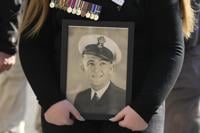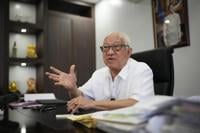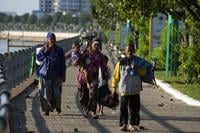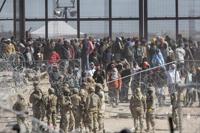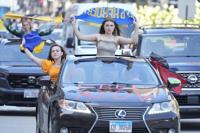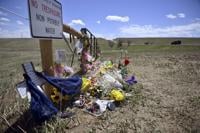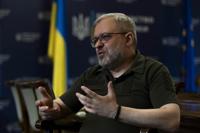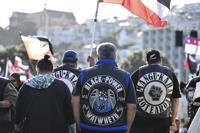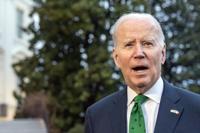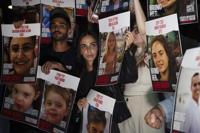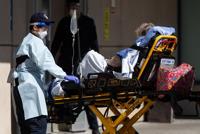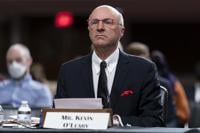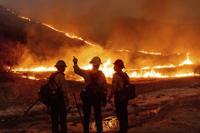CANBERRA, Australia (AP) — Hundreds of thousands of Australians gathered at dawn services and veterans’ street marches across the nation on Tuesday to commemorate their war dead on Anzac Day as recent events focused minds on the cost of war and the new threat of China’s rapid military buildup.
Australia and New Zealand commemorate Anzac Day every April 25 — the date in 1915 when the Australia and New Zealand Army Corps landed on the beaches of Gallipoli, in northwest Turkey, in an ill-fated campaign that was the soldiers’ first combat of World War I.
Prime Minister Anthony Albanese spoke to more than 30,000 people who gathered at the Australian War Memorial in the national capital Canberra for the first Anzac Day since his government was elected almost a year ago.
“Gallipoli is just one battle in our history, but in all its stories of valor and resilience, in its simple truth of Australians looking out for each other no matter how bad things got, it has come to stand for something so much bigger in our collective heart,” Albanese said.
His government chose the eve of Anzac Day to release a that warned with China’s growing military strength and assertiveness, Australia’s geographic isolation did not provide the protection from global conflict that it once did.
The report recommended more Australian defense spending and a rapid embrace of missile technology to strike targets at longer ranges. It described China’s military buildup as the largest and most ambitious of any country since the end of World War II.
Over the weekend, Australians were given a tragic reminder of when Japan’s land forces reached what is now Australia’s nearest neighbor, Papua New Guinea, during World War II. With Japanese supply lines stretched, Japan decided to isolate rather than invade Australia.
Deep-sea explorers announced Saturday they had found the wreck of the that was transporting Allied prisoners of war from Rabaul in the then-Australian territory of New Guinea to China when it was torpedoed off the coast of the Philippines in 1942.
The 1,080 killed from 14 nations included 979 Australians, which was Australia’s largest wartime loss of life at sea.
While veterans of the two world wars dominated Anzac Day services and marches for decades, their descendants and unrelated younger generations have taken their place, defying an expectation that the tradition might die with the veterans.
Veterans Affairs Minister Keogh, who is representing his government at Gallipoli, said the dawn service there was expected to attract the biggest crowd since the centenary commemorations in 2015.
“What we’ve really seen Anzac Day become is not just about one conflict, it’s now a day where we commemorate not just those that died but all those people that have served in our uniform on our behalf in conflict,” Keogh told Australian Broadcasting Corp.
In downtown Sydney, Glenda Rixon wore the medals of her late father Henry “Harry” Rixon, a Korean War infantryman, and was touched that the 70th anniversary of the Korean armistice was noted in Martin Place where dawn services have been held since 1927.
“Usually they don’t say anything -- it’s like it’s the forgotten war,” Rixon said.
“I’m really proud of my father. He passed away eight years ago. It’s a special day. We used to always watch him march,” she added.
As well as 70 years since Australia’s involvement in the Korean War ended, this year’s ceremonies also commemorated 50 years since the last Australian forces withdrew from the Vietnam War.
Dawn services and marches were also held across New Zealand, where Anzac Day is considered the most important day of national commemoration as it is in Australia.
___
Find more AP Asia-Pacific coverage at


